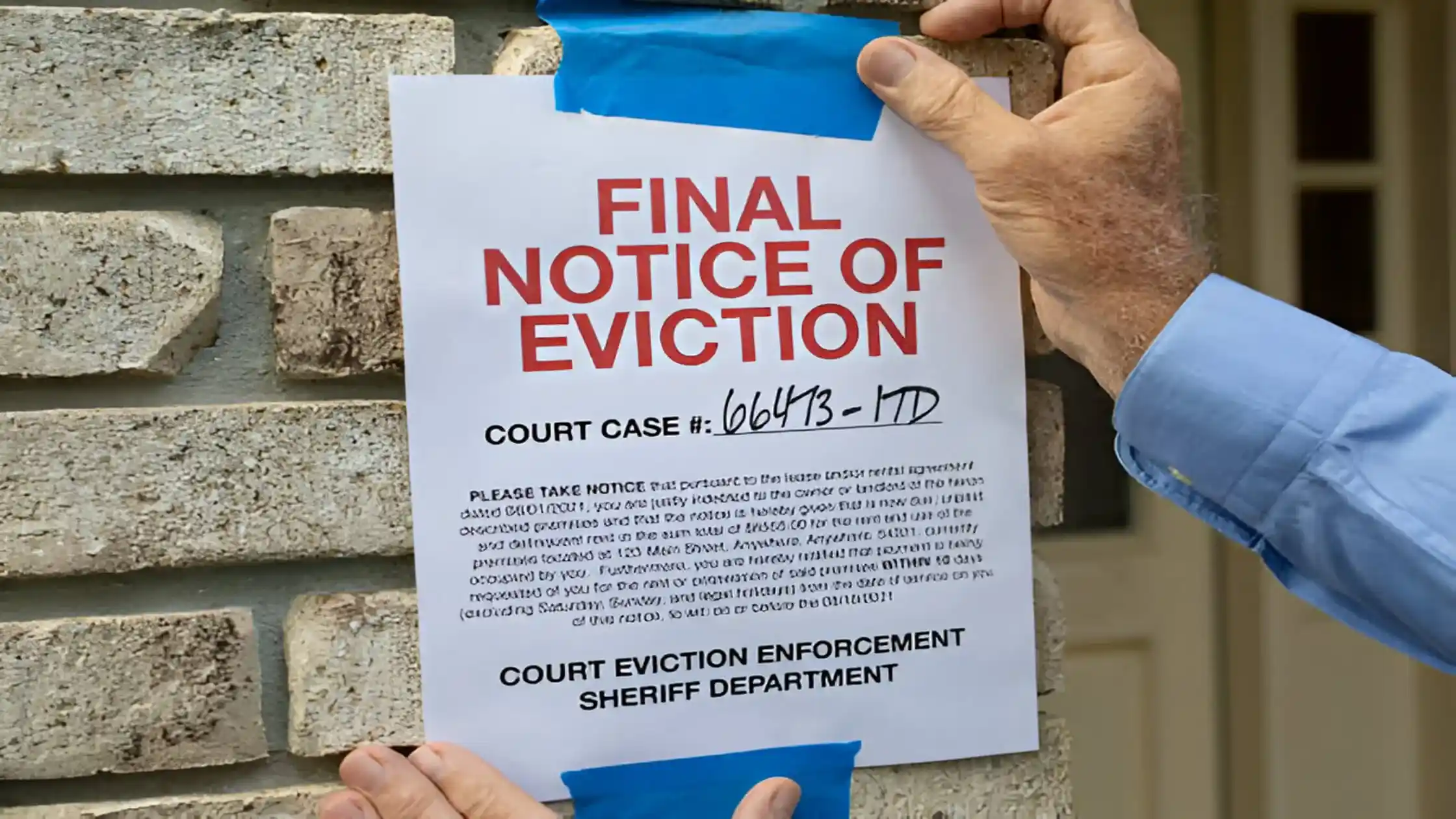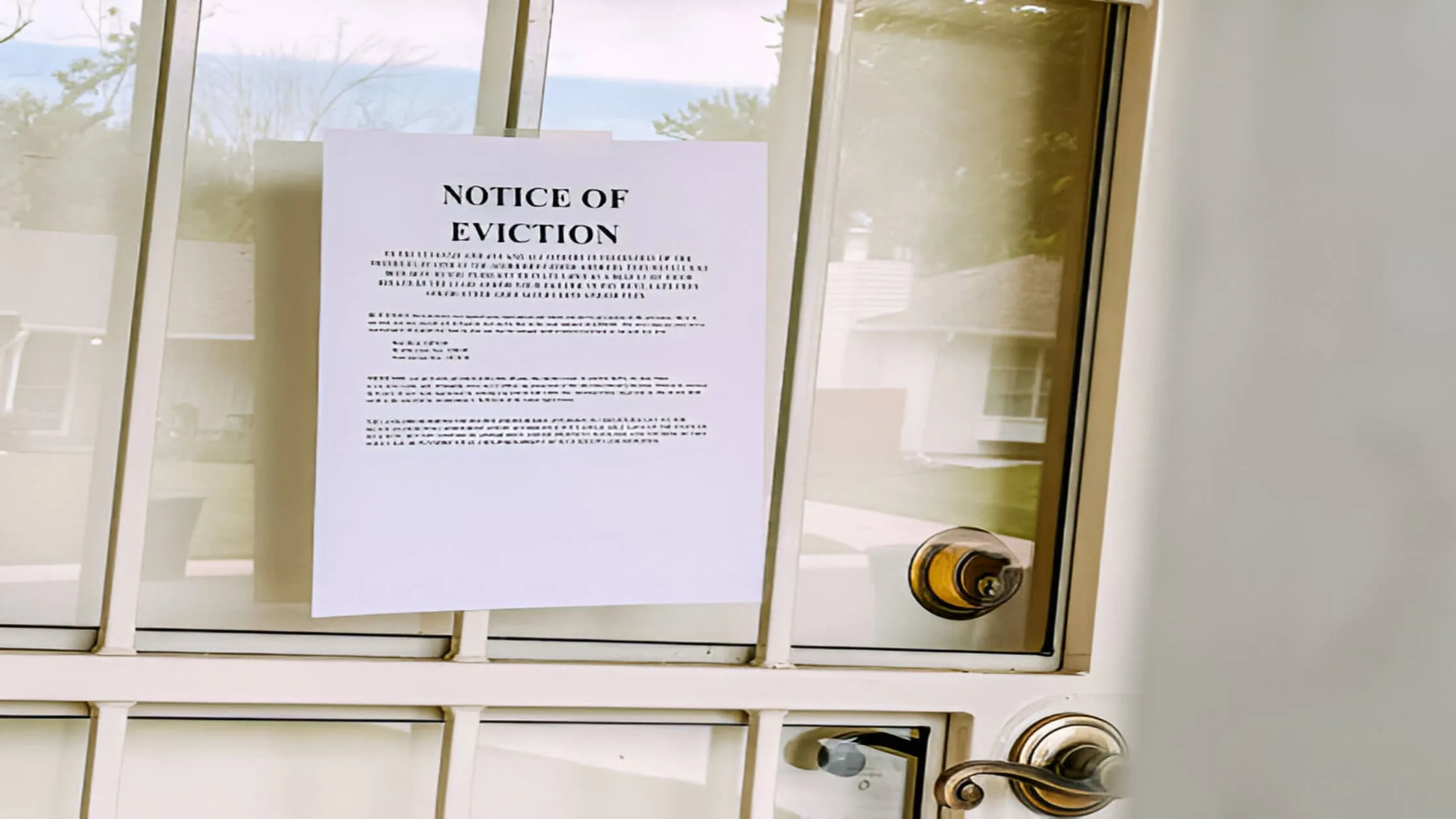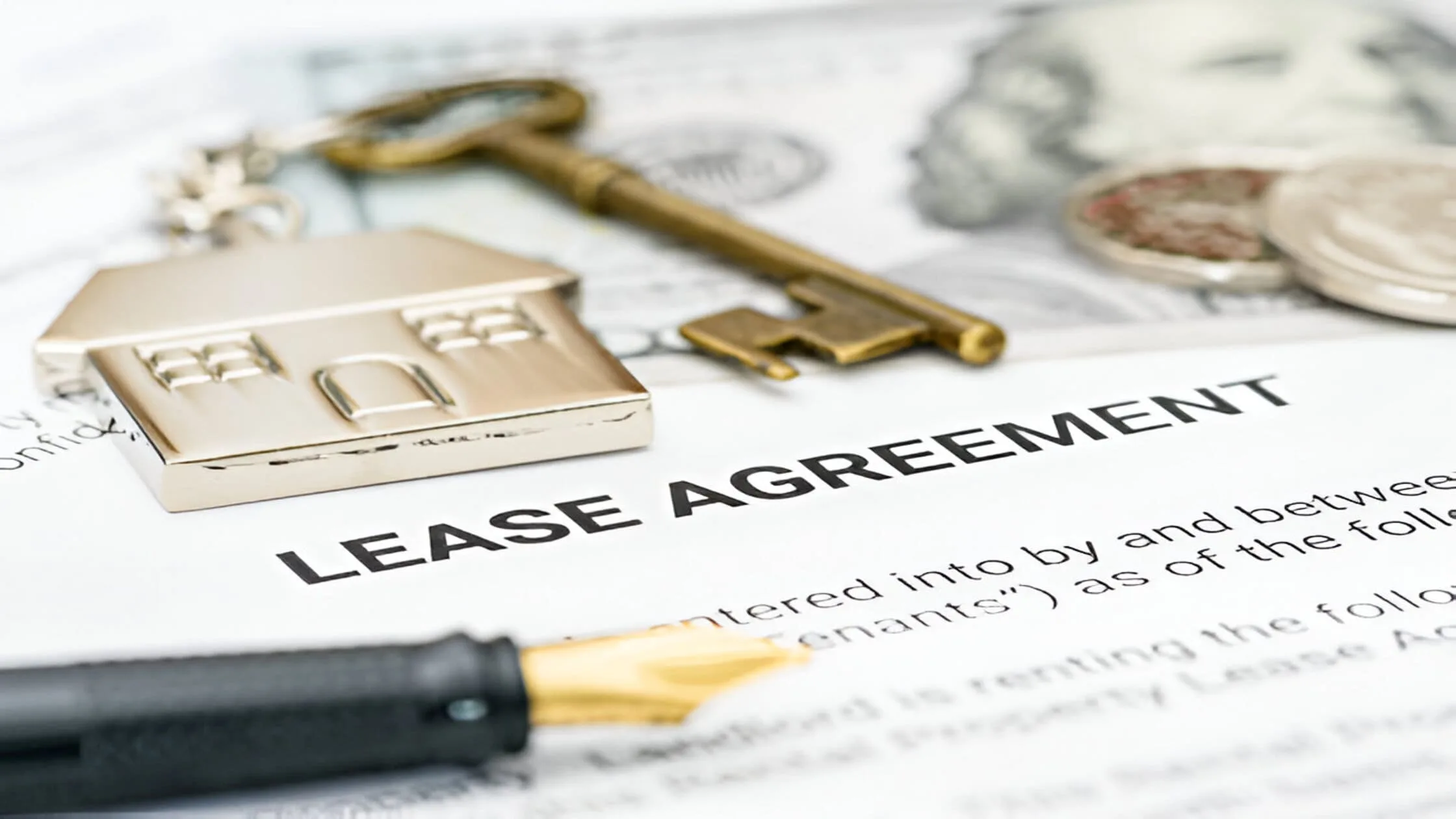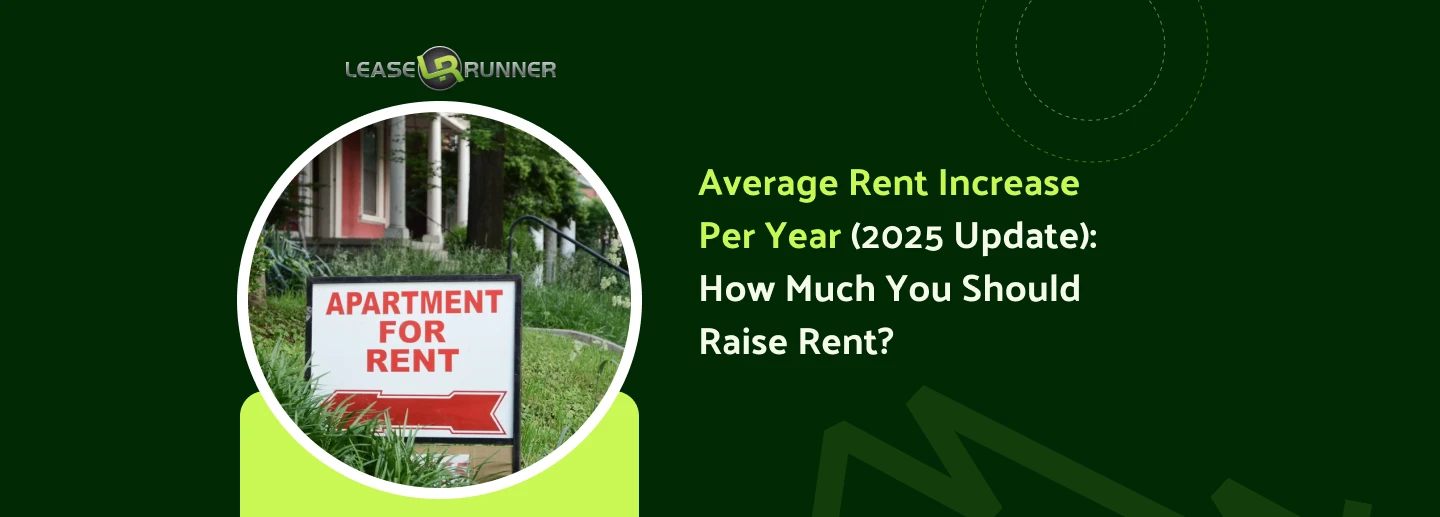How many lease violations before eviction is one of the most asked questions by landlords dealing with problem tenants. The answer depends on your state laws, lease terms, and the type of violation. At LeaseRunner, we help landlords understand the eviction process and protect their rental properties.
Some violations may lead to immediate eviction, while others may require multiple warnings. Understanding lease violation examples and knowing when to send a lease violation notice can save time and money. This guide covers everything landlords need to know about violations, notices, and the eviction process in 2025.

Quick Facts: Lease Violations and Eviction
What Is a Lease Violation?
A lease violation occurs when a tenant fails to follow the rules outlined in the rental agreement. These infractions might be small or big. Some little problems may include not following pool regulations, hanging things on balconies when it's not allowed, or parking in someone else's designated place.

Not paying rent, damaging the property, or letting illegal roommates move in without authorization are all more serious lease breaches. If your contract says that smoking is not permitted in the apartment and the renter is discovered smoking inside, that's an obvious violation.
If your contract says you need formal permission for pets and a renter brings in a big dog without permission, that's another violation. Landlords should go over the lease with the renters when they move in to make sure they understand all of the conditions.
5 Common Lease Violation Examples Landlords Must Know
Understanding lease violation examples is critical for both new and experienced landlords. These violations can lead to formal action, including a lease violation notice or, in severe cases, eviction. Acting quickly when you spot these problems protects your property and keeps your rental business on track.
1. Nonpayment of rent
Non-payment of rent is the most frequent basis of legal disputes. Whenever a tenant violates the rental contract by not paying rent, the landlord's first step will always be to send a notice of past-due rent.
For example, if rent is due on the 1st and none has been paid through the 5th, send a formal notice with stated payment date and late fee policy. If not corrected, the follow-up would be a second tenant lease violation letter and, as an ultimate measure, filing for eviction. Repeated late payment can result in expedited eviction, according to local law.
2. Unauthorized pets or occupants
Having a pet or additional individuals reside on the premises without consent is a traditional lease violation. Bringing home a big dog despite a no-pets policy or allowing another adult to reside in the unit without being included on the lease is a breach of the majority of rental contracts.
Landlords must have strict pet and tenant language included in all of their leases to prevent ambiguity. Finding a tenant with an unauthorized pet or roommate should invoke a lease violation notice letter to the tenant for infractions requiring removal or adjustment within a specified timeframe. Incidents should be escalated to a formal eviction process.
3. Excessive noise or nuisance behavior
Excessive noise and nuisance issues are typical sources of tension between tenants. Typical examples include late-night parties, endless bickering, or deafening music played at ear-splitting levels. Leases must always contain quiet hours and the right to quiet enjoyment.
If noise or disturbance complaints are made, serve a notice of violation of lease describing the unacceptable conduct and what needs to be changed, e.g., cessation of late-night parties immediately. Bespoke nuisance conduct after a warning generally leads to additional notices and, if not resolved, eviction proceedings.
4. Property damage
Any time a renter damages property, whether on purpose or by accident, it is a serious offense. For instance, a tenant could punch a hole in the wall during a fight, break windows after a fight, or destroy sections of grass by not watering them. In the lease, landlords should say what “damage" means (not merely “wear and tear") and how long the renter has to remedy it.
If there is damage, send the renter a notice saying they have broken the lease and stating what has to be fixed and when it needs to be done, generally within 7 to 14 days. If you don't fix the damage, the renter may have to pay for repairs, and the eviction procedure may go faster.
5. Criminal activity
The most extreme causes of eviction are criminal conduct. These include producing drugs, illicit weapons, or burglary on the property. The majority of state laws enable landlords to seek eviction after one occurrence of illegal activity, whether or not an arrest is made.
The moment you hear about possible criminal activities, you ought to issue a lease violation notice in reference to the illegal activities clause in the lease and start consulting local authorities or legal advisors. In most situations, there is an instantaneous eviction action that is taken.
Recognizing these lease violation cases early on, reacting with a blatant lease violation notice letter to the tenant for infractions, and recording each movement prevents landlords from being left with long court hearings and keeps rental space safe and lucrative. Every movement, from sending a simple reminder to filing for eviction, originates from these vital early warnings.
What Is a Lease Violation Notice? When Do You Send One?
A lease violation notice is the landlord’s first move when a tenant has violated a lease term. The written notice informs the tenant, identifies the issue, and instructs them on what to do. Sending the notice in a timely manner with the correct information keeps you in good standing and is more effective if the problem isn't taken care of.

What Should Be Included in the Violation Notice?
A nicely written lease violation notice is crucial to making your rental process tidy and lawful. To prevent controversy and guarantee a good notice, be precise and direct with all declarations:
- Tenant's Full Name & Property Address: Always express the tenant's complete legal name and the unit address precisely. For instance: “Dear Marcus Brown, 220 West Elm St, Unit 5A."
- Date of the Infraction: Just write down when the infraction happened. Example: “Unauthorized pet observed on 7/12/2025."
- Specific Description & Lease Clause: Write a clear but concise description of the infraction, referencing the pertinent clause. Example: “This is a breach of Section 8.2 of your lease that prohibits the presence of pets in writing."
- Required Action & Cure Deadline: Clearly say what the tenant is to do and by when. Example: “Get rid of the pet within 3 days to correct this lease infraction."
- Consequences if Not Fixed: Say what will happen in the future if not corrected: “Eviction action may be taken if this matter is not corrected."
- Your Name & Contact Information: Sign your full name, title, and your best contact information for inquiries.
- Maintain a Copy: Always retain a dated and signed copy for yourself. Using a standard tenant lease violation letter template is a promise of professionalism and legality.
Having all these components ensures your lease violation notice is clear, detailed, and enforceable.
When Do You Send a Lease Violation Warning Letter?
Issue the tenant with a lease violation warning notice for infractions as soon as you see a fault. Act early to solve problems before they become too big to handle. Don't wait weeks—delaying weakens your power of enforcement and could violate local notice laws.
Sample Lease Violation Warning Letter to Tenant
How Many Lease Violations Before Eviction Happens?

This question, “How many lease violations before eviction?”, does not have a single solid answer. The eviction process depends on the lease terms, violation type, local laws, and past tenant history.
The “One Strike” vs. “Three Strikes” Rule
Serious violations (such as criminal activity, violence, or major property damage) may result in immediate eviction after just one written notice, which is the “one strike” rule.
More commonly, landlords follow a “three strikes” rule, giving one or more warnings before starting an eviction. Always specify your policy in the lease. For example, your lease could state: “After two written lease violation notices for the same issue within 12 months, the landlord may proceed with eviction.”
When Can You Evict After Just One Violation?
A judge may allow eviction after one severe violation, such as:
- Illegal activities on property (eg, drug production)
- Threats, violence, or endangering others
- Major destruction of property
Not all issues justify instant action. Nonpayment usually goes through several steps: reminder, tenant lease violation letter, notice to pay or quit, then court filing if unpaid.
State-by-State Differences (e.g., Texas)
How many Texas pre-eviction lease violations? Texas statute is stringent. Texas has no established “number" of violations in any one case, so it always adheres to the state Landlord-Tenant Act.
If the tenant fails to comply, eviction can begin, even on a first offense. For a significant violation, like non-payment of rent or criminal activity, landlords may simply send a notice of lease violation with a 3-day request to cure or quit.
Some states have additional cure times or additional documentation requirements. Always review local ordinances prior to serving a notice of lease violation.
What Happens After a Lease Violation?

The process after a lease violation notice is sent is critical. This stage determines whether the tenant can stay or if the situation leads to legal removal.
Can Tenants Fix the Violation?
In most cases, the tenant lease violation letter includes a list of steps for the renter to correct the problem (“cure the breach”). For nonpayment, this means paying the rent; for unauthorized pets, removing the animal. Landlords must allow the tenant reasonable time, often 3–10 days.
If the tenant cures all issues within the stated time, the lease usually continues without further penalty. Good landlords use this step to resolve problems rather than immediately escalating.
What If the Tenant Doesn’t Comply?
If a tenant violates the lease agreement and does not fix the issue by the deadline, the landlord may start the formal eviction process. This typically involves:
- Sending final notice of termination.
- Filing an unlawful detainer (eviction) follows in the local court.
- Attending a court hearing with evidence (copies of all lease violation notices and communication).
If the judge rules in favor of the landlord, the tenant must move, sometimes within days.
Does a Lease Violation Go on the Tenant's Record?
Does a lease violation go on your record? Not every notice will appear on a background check. But if an eviction case is filed or a judgment awarded, these may be visible to future landlords or employers during a rental screening.
Serial lease violations may also be noted in property management databases, creating problems for tenants when applying elsewhere. Knowing what happens with a lease violation helps renters avoid mistakes that hurt their long-term housing prospects.
How to Prevent Lease Violations From the Start?
A landlord's best strategy is to avoid violations and evictions before they happen. Every step, from screening to ongoing communication, matters.

Strong Tenant Screening Practices
Thorough screening is your first line of defense against chronic violations. Check income, credit, rental history, and references using services like LeaseRunner's tenant screening checklist. Screen out risky renters and reduce your odds of sending a tenant lease violation letter later.
Do a full background check, but also watch for red flags in the interview—frequent moving, incomplete answers, vague employment details. Use LeaseRunner's tools for a simple, legal, and accurate process.
Clear Lease Terms with No Ambiguities
A clear, detailed lease outline:
- What constitutes a violation (list common lease violation examples )?
- How many lease violations before eviction will trigger action?
- Cure period and warning steps.
- Rights and duties of both parties.
Customize your lease for your property. Update clauses related to key issues, such as late rent, unauthorized pets, noise, or property damage. Also, point tenants to where they can find answers to common questions, such as how much the landlord can raise rent and other FAQ topics, to avoid confusion.
Ongoing Communication with Tenants
Proactive, open communication reduces mistakes and prevents incidents. Keep lines open for maintenance requests, payment questions, or community reminders.
If you notice minor rule breaks early, speak to the tenant in person or via email before sending an official lease violation warning letter to the tenant for violations. Consider quarterly or annual lease check-ins—great landlords fix issues before they become violations.
Bottom Line
How many lease violations before eviction depends on your lease terms, state law, and what the tenant did wrong. Usually, one negative issue (such as extreme property damage or criminal wrongdoing) will cause eviction following a written warning if the tenant does not correct the issue.
For minor offenses (such as late rent payment or too much noise in the evening), most landlords give tenants written notices and an opportunity to correct the behavior first.
We at LeaseRunner think straightforward rules prevent both of you from making errors. Always keep your lease simple, issue timely lease violation notices, and thoroughly screen tenants initially.
Good communication, such as warning notices, is a reasonable opportunity for tenants and keeps landlords away from court. It is smart to have records of all notices. Each state has different rules, so double-check local statutes or consult a property management professional before proceeding.
FAQs
Q1. How many lease violations before eviction usually happens?
There's no fixed number by law. In many places, landlords will send two or three warnings for small issues (like late rent or noise) before starting the eviction process. For example, if a tenant pays rent late two times, then throws a loud party, they could get a written lease violation warning each time.
After the second or third warning, an eviction can start for repeat violations. For big problems, like breaking the law or damaging the apartment, landlords can move ahead with eviction after just one warning letter.
Q2. Does a lease violation go on your record?
A warning or lease violation notice by itself does not show up on public records. It stays in the landlord's file. But, if the issue leads to eviction and the landlord files with the court, then the problem and the eviction could appear in background checks or on your rental report. That's why it's important for tenants to fix lease violations right away.
Q3. What happens with a lease violation if the tenant fixes the issue?
If the tenant gets a lease violation notice—like for a missed rent payment or a barking dog—and fixes the problem within the time given, the lease stays active and they can remain in the rental.
The landlord keeps a record of the warning. If the tenant repeats the same problem again and again, more notices may be sent, and it can count against them in the future.
Q4. Can a landlord evict after just one lease violation?
Yes, for serious lease breaks. If a tenant uses the rental for illegal business, threatens neighbors, or destroys property, the landlord can send a lease violation notice and start the eviction process soon after.
In some states, like Texas, the landlord may only need to give three days' notice for these serious cases. For less serious issues, more warnings are usually given before eviction.
By knowing how the lease violation notice works and acting early, both landlords and tenants can avoid bigger problems down the line. Clear rules and good records keep everyone protected.




![What Is an Admin Fee for Apartments? [2025 Landlord’s Guide]](https://www.leaserunner.com/storage/413/01KAJSZKW3TMYDTGTKJV8VHGPN.webp)


